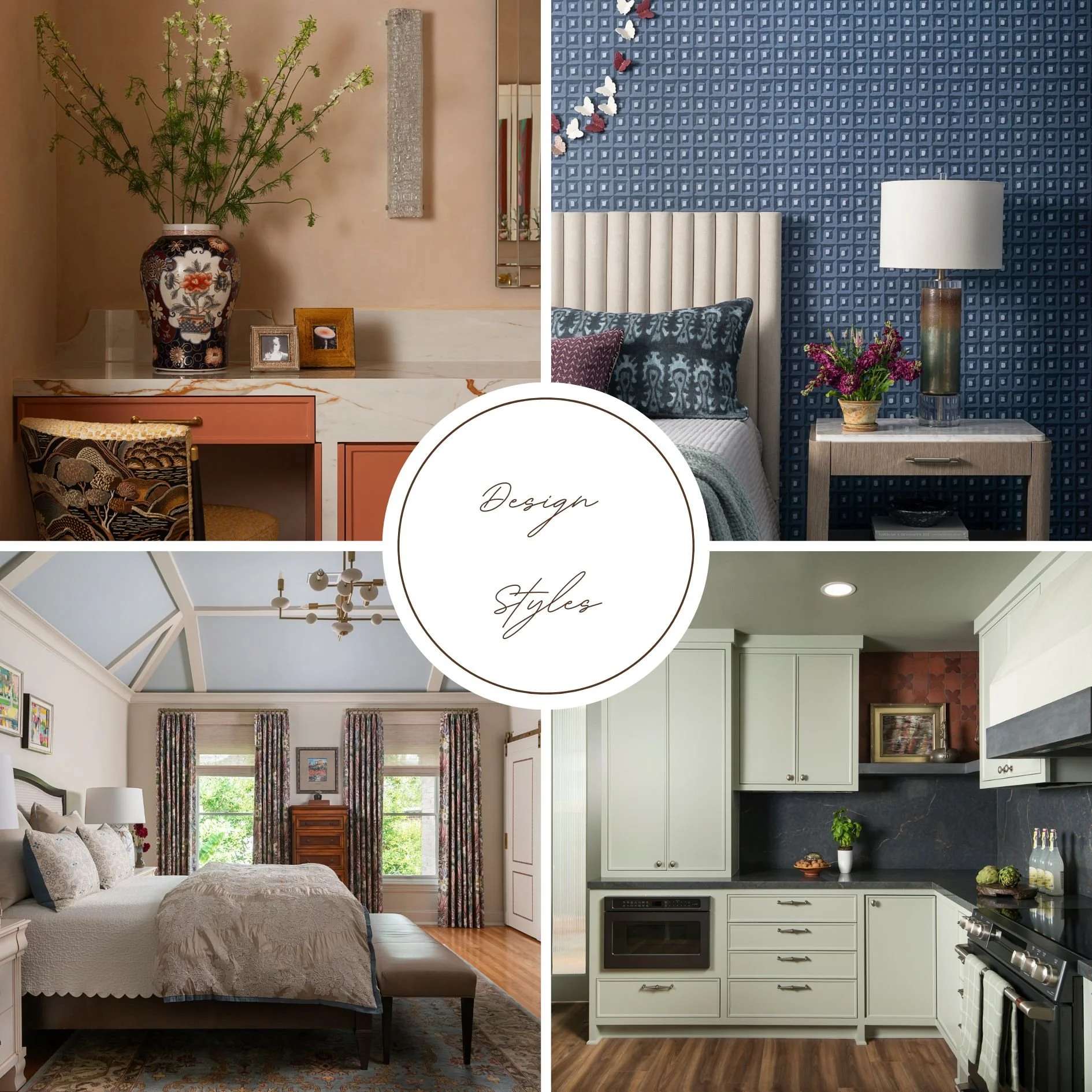Past Meets Present: Exploring 14 Interior Design Styles That Shaped Our Homes. Part One
Interior design is more than just choosing beautiful furniture and fabrics. it’s a reflection of culture, history, and personal expression. Over the centuries, different design styles have emerged from specific regions and time periods, shaped by architecture, social trends, and even political movements. Today, many of these styles continue to inspire, often blending together in fresh and unexpected ways. Let’s take a journey through some of the most influential design styles, where they originated, and how they’ve evolved.
traditional
The story begins in Europe, where traditional design flourished in the 18th and 19th centuries. Rooted in English and French influences, it was defined by symmetry, ornate millwork, rich fabrics like silk and velvet, and finely carved wood. These interiors often conveyed wealth and formality, yet over time the heaviness has softened into a fresher, more livable elegance. What was once gilded and formal is now lightened with streamlined silhouettes and airy palettes, but still timeless, just less imposing.
Modernism
As the 20th century dawned, a radical shift took place. Modernism emerged in Europe, fueled by movements like the Bauhaus and the International Style, rejecting ornate traditions in favor of clean lines, open plans, and honesty of materials. Concrete, steel, and glass became heroes of the movement. While the early modernist aesthetic felt stark, today it has warmed, blending natural wood and softer neutrals to create homes that are sleek but welcoming.
Mid-Century Modern
From modernism came one of the most beloved styles of the mid-20th century: mid-century modern. Shaped by post-war optimism in America and Scandinavian influences abroad, this style celebrated sleek furniture with tapered legs, organic curves, bold color, and a connection to nature. Though it fell out of favor in the late 20th century, it has since roared back with cult status—vintage originals prized as much as contemporary reproductions.
Scandinavian Design
Scandinavian design, itself a cousin to mid-century modern, took root in the Nordic countries during the 1930s and rose to global popularity in the 1950s. Its ethos of simplicity, functionality, and comfort made it a household favorite. Pale woods, neutral palettes, and cozy textiles created spaces that were both minimal and warm. Over time, “Scandi” design has grown beyond aesthetics into a lifestyle philosophy—think hygge—and remains a cornerstone of contemporary interiors.
Minimalism
The philosophy of “less is more” also defined minimalism, which drew inspiration from Japanese Zen traditions and modernist principles in the 1960s and 70s. Early versions were austere and almost severe, but contemporary minimalism has evolved to incorporate texture, natural light, and organic forms, making it feel calming rather than cold. This Japanese influence also resurfaces in today’s Japandi trend. That is a 21st-century blend of Japanese minimalism and Scandinavian warmth. The result is soulful simplicity with a human touch, proving that fusion can feel both timeless and new.
Industrial
And then came Industrial design, born not in palaces or drawing rooms but in abandoned warehouses and factories of the early 20th century. When cities like New York and London began converting massive industrial spaces into loft apartments, designers saw beauty in what others considered raw: exposed brick walls, weathered concrete floors, steel beams, and ductwork left unapologetically visible. The style embodied grit, authenticity, and the romance of urban living. Industrial interiors valued function first. Think worktables turned into dining tables, factory lighting became statement fixtures, and reclaimed wood found new life as shelving.
Art Deco
However, not all styles embraced simplicity. The 1920s brought Art Deco, a Paris born movement defined by glamour, geometry, and gleaming materials like chrome and lacquer. With its bold jewel tones and luxurious finishes, it epitomized the Jazz Age. Though it waned after World War II, Art Deco has returned in waves, its motifs now used in more restrained, modernized ways to add a note of drama and sophistication.
From the gilded symmetry of Traditional interiors to the raw grit of Industrial lofts, Part One of our journey shows just how dramatically design has evolved over time. Each style reflects not only aesthetics but also the cultural shifts that shaped them—formality giving way to function, ornament to simplicity, and craftsmanship to industrial ingenuity. In Part Two, we’ll explore the more free-spirited and lifestyle-driven movements—Bohemian, Farmhouse, Coastal, and beyond—that continue to influence how we live and design today.








